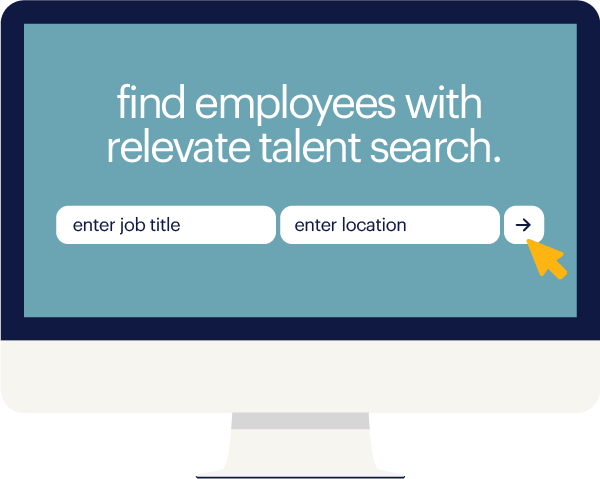The rise of technology in our everyday lives isn't just changing how we communicate (or how we watch television), it's transforming how we work. And no one knows that more acutely than office professionals. Serving as a vital bond between you and your customers, office professionals are the core of your business — handling a staggeringly diverse roster of tasks every day, and doing it with aplomb.
But these roles are changing rapidly as new digital tools emerge and quickly become status quo, leading to an ever-widening skills gap — and a talent shortage. In fact, 37 percent of hiring managers cite these two concerns as the biggest external challenge facing their companies today. Add to that the current trend of decreasing employee tenure among the millennial and Gen Z workforce, and you can see why recruitment has become every business's top priority.
So what can your organization do to attract — and retain — top office professionals, especially for this area's most in-demand roles? Here, we break down three things you can do to address some of the biggest recruitment pain points companies are experiencing today.
Let's dive in.
make your salary and benefits competitive
Employer review sites. Salary calculators. LinkedIn compensation insights. With so many digital tools available today, you better believe that job seekers know their value — and the salary you need to bring to the table. Especially in the office professionals space, with such a wide range in roles and responsibilities (from entry-level customer service representatives to seasoned executive assistants), knowing what makes for a competitive compensation package will give you a leg up on your competition. Here are some steps you can do to make your salary and benefits competitive:
1. audit your compensation levels
Whether you audited your comp levels just last year or if this is your first time doing so, with so much change happening in the hiring landscape, revisiting your offerings is a must in the current job market. Get started by asking questions that connect salary with employee performance and motivation, such as:
- Is each position's salary commensurate with the responsibilities that person holds?
- Do our current salary levels motivate our employees to come to work every day and perform their best?
- Does our current program reflect upticks in workload as employees advance through the company, or do new-hire administrative assistants make the same amount of money as someone who's advanced to an executive assistant role?
2. make employees' lives flexible
Does an executive assistant need to sit outside the VP's door from nine to five every day to get their job done? Not anymore, now that technology has enabled us to communicate in real time no matter where we are. This means offerings like telecommuting and flexible schedules are no longer seen as perks, but standard benefits. Make sure you offer such flexibility and promote a better sense of work/life balance for your workers, which in turn will help your employees come to the office with a clear mind, ready to work.
3. help employees with education costs
No matter what role you're hiring for, the person you hire is likely carrying the heavy burden of student debt. What's more, job seekers are increasingly attracted by employers who value continuous learning. So strengthening your benefits program with professional development or tuition reimbursement programs will not only help keep employees' skill sets up-to-date, but will ease their financial lives and foster greater loyalty to your organization.
source passive candidates
If you still think posting your open roles on job boards is going to yield an avalanche of applications from top talent, think again. In today's ultra-competitive market, you're going to need to prioritize sourcing passive candidates in order to find those superstars, who are already too busy being engaged with their current jobs to crawl job boards seeking a new opportunity. Here are some steps you can do to source passive candidates:
1. prioritize internal recruiting
Building an internal recruitment program is a win-win: Not only do you get to tap a talent pipeline of people who already know the ins and outs of your company, you'll be fostering greater engagement by letting your employees know there's room for them to grow with you — say, moving from a customer service representative role to managing a team of representatives themselves.
2. partner with a staffing firm
No one knows how to stoke interest in a job opening better than a staffing expert — after all, it's their job. So when it comes to sourcing hard-to-find passive candidates, partner with a staffing firm to leverage the people skills and deep industry knowledge of their recruitment team to start those conversations with qualified candidates in their talent pool. Not only will they find someone who matches the skill set you need, they'll find someone who's the best fit for your company's culture — not someone else's.
3. incentivize network referrals from your current team
Your next great general clerk could be someone your current financial analyst went to college with, so make use of those connections by building (or refining) a referral program that incentivizes your employees to suggest people they know from their network. And did you know those referral candidates are likely to stay with your company for 25 percent longer as well? Now you do.
build your employer brand
Given that 86 percent of workers wouldn't apply to a company that has a bad reputation with former employees, you need to make sure you're on top of your business's employer brand. Especially when it comes to landing top talent for your office professionals roles, it's vital to showcase your company's mission, put a spotlight on your employees' success stories and show how you value each person in your organization. After all, you wouldn't launch a new product without a strong marketing plan, and the same is true for marketing your business as an employer of choice. Here are some steps you can do to build your employer brand:
1. job descriptions are part of your employer brand
Most job listings in this space read as "same job, different company," so to drive interest in your open roles, you're going to have to think beyond a long list of duties and qualifications. To properly market the position and get top talent excited about the opportunities, use clear, aspirational language and focus on the human aspects of the job, the value the position brings to the organization and what your company does to promote a positive workplace culture and professional development.
2. show your company's mission with your success stories
There's no better way to trumpet your employees' (and your company's) success stories than by telling them yourself — especially if you're a startup or a smaller company without a large digital footprint or media attention. Exhibit your employee's investment in their work through blog articles, video interviews and more — and be sure to further the reach of those stories through your LinkedIn profile and social media channels.
3. emphasize your upskilling and training offerings
With 93 percent of employees saying they stay with companies longer if they invest in their careers, your hiring game will be strengthened greatly by showcasing the importance your company places on professional development and educational initiatives. And with emerging tech changing how we work on a continual basis, making sure your employees' skill sets are up-to-date will keep your business healthy — and your employees engaged.
the top 5 roles in office professionals
Now that you have a checklist of things to put into action to attract the best office professionals to your company, head on over to these articles to dive deeper and take a look at how to hire for these in-demand positions in the office professionals space:
administrative assistantAnd remember what we said earlier — if these steps seem overwhelming, or you simply don't have the resources you need to amp up your recruitment game, a staffing partner can help. Start a conversation with Randstad Office Professionals to see what they can do to find the superstars you're looking for. Or, if you'd rather browse our pool of qualified, vetted candidates right how, head over to our Find Employee portal.








